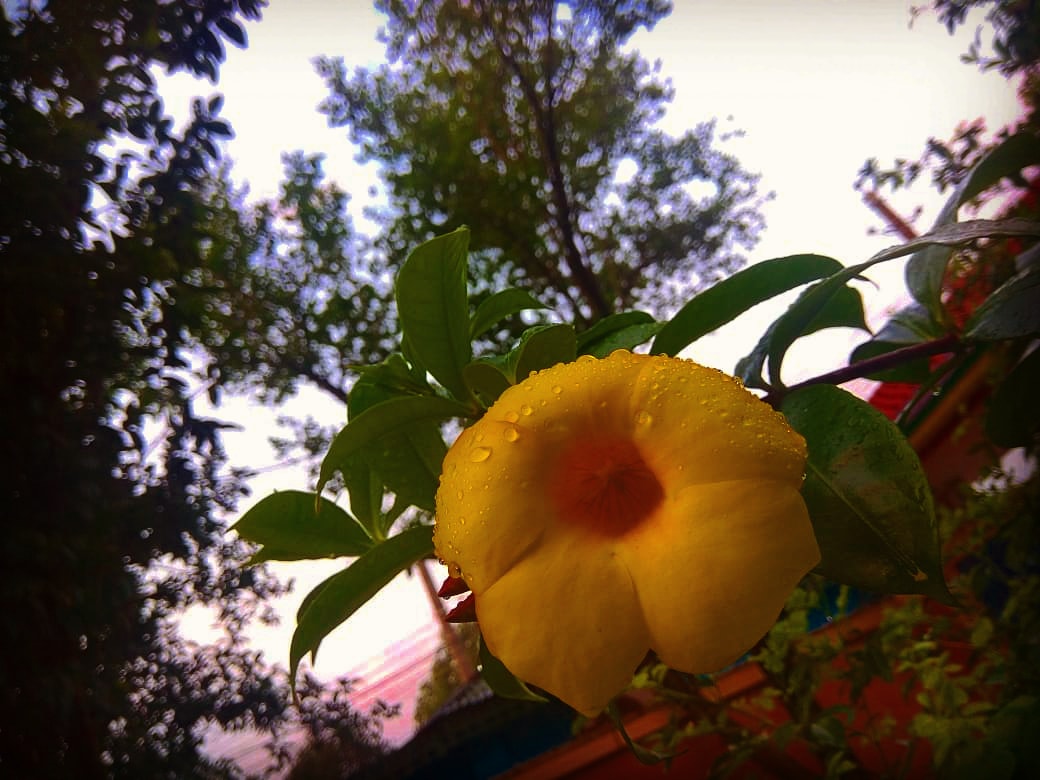There are not many cultures with bright yellow flowers in indoor plants. And there are very few beauties who can become the most attractive exotic in interior design. Allamanda is a happy exception to the unique golden-lemon color of simple but shiny beautiful flowers. The impression of fashionable minimalism and imperfection in this plant only enhances the beautiful green color. If you provide very bright lighting, taking care of this indoor culture will not be difficult at all.

Allamanda's popular nicknames clearly describe her appearance. "Jungle bells", "golden trumpets" - these epithets are better than others at referring to the main features of the tree. In fact, simplicity, brevity of forms and visibility, minimalism and attractiveness are the best that are in the almonds.
.jpeg)
An enchanting representative of the Kutrav family, when they first met on the shelves of the flower shop, the plant seemed like a compact. But you shouldn’t be mistaken about the size of the almond: it’s a large, ever-growing plant that will quickly “lose” the influence of growth inhibitors and show all its true power. At the same time, the growth rate is average, but the nature of the tree does not allow it to be positioned as a compact indoor accent culture. Allamanda needs a lot of space, this plant likes single parts and does not tolerate close competitors: keeping it inside, it should be remembered that in proud loneliness Almamanda can also embrace a whole group of very lively small cultures.
.jpeg)
Allamanda blooms throughout the summer from May to September. But time often shifts, expands, changes.
Unlike many indoor plants with flowering conditions, Allamanda is not at all afraid of direct sunlight. He needs to be provided with the brightest light, protected only from the sizzling rays of noon. The leaves are most decorative in bright diffused light, but the plant also looks great in a sunny place. Allamanda will feel great in all window sills as well as in partially southern areas. It grows nicely in greenhouses and bright archives, with panoramic windows, warm balconies and loggias.
.jpeg)
An important feature of the allamander - it can already be extended for almost the entire fall of long flowering, if you start to light the shrubs in time and compensate for the seasonal loss of light
With few exceptions, detention in almonds requires the same conditions and the same care. This plant can grow in the role of a dense shrub, or you can give the stem to expand and free up the full potential of the plant. In fact, only the structure affects the form of Allamanda growth. Despite the need for almonds to keep them warm in the winter, no complicated measures will be needed to ensure everything is needed. These are quite friendly cultures that require careful attention, which will not cause problems and will respond with gratitude over time. The only drawback of almonds is its toxicity: not only the juice, but all parts of the plant are toxic, causing irritation to the skin and mucous membranes. When working with a tree, especially when pruning, be sure to protect your hand with gloves.
.jpeg)
Source
Plagiarism is the copying & pasting of others work without giving credit to the original author or artist. Plagiarized posts are considered fraud and violate the intellectual property rights of the original creator.
Fraud is discouraged by the community and may result in the account being Blacklisted.
If you believe this comment is in error, please contact us in #appeals in Discord.
my tweet